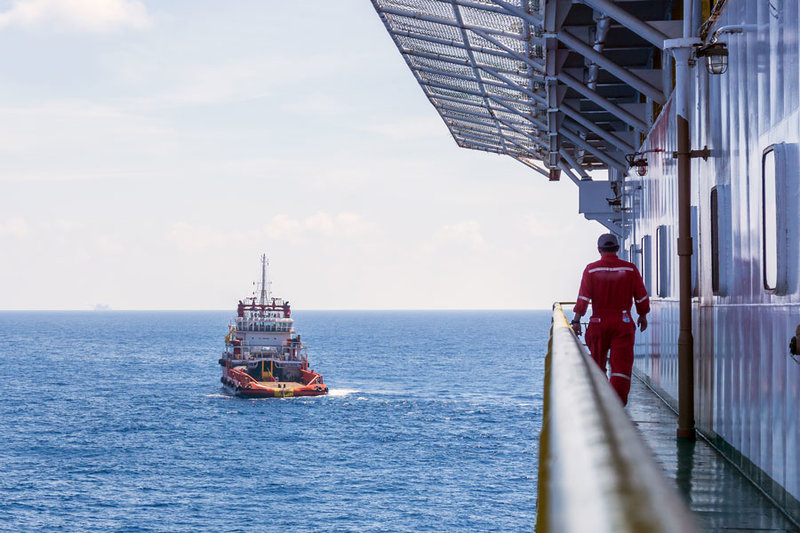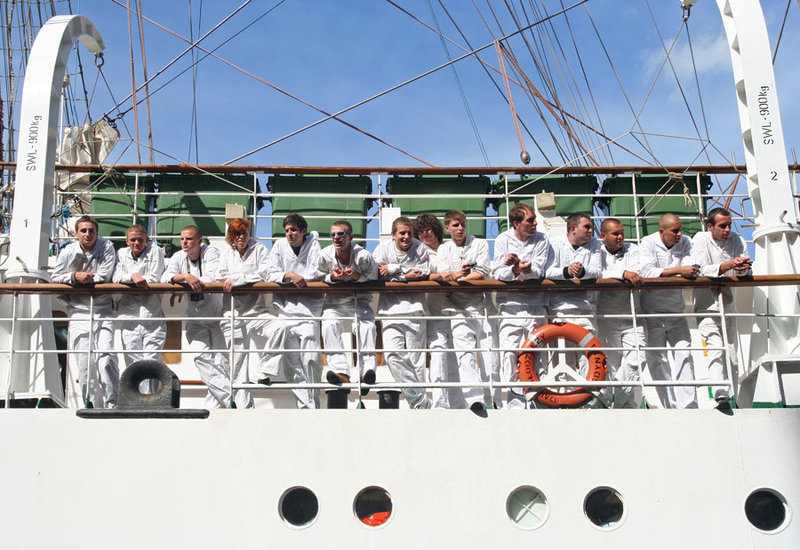Workforce
Shore leave:
will a new standard protect seafarer rights?
International maritime law is supposed to protect the right to shore leave, but since 9/11 many seafarers have found this right eroded. Patrick Kingsland finds out whether a new amendment could change this
The ship pulls up
at port after weeks at sea, its tired staff eager to escape the monotony of life on board. Outside, the seafarers can see the busy port and the city behind it. But with no visas and a port authority indifferent to their welfare they are refused entrance. For hours they wait on the cramped ship, until it pulls away for another few weeks at sea.
It is a grim situation that many seafarers will be all too familiar with. Over the past decade, denial of shore leave – defined as the period during which sailors are allowed to leave a ship docked at port – has become a major problem for foreign crews in the shipping industry.
According to the 2017 Shore Leave Survey of US ports by the Seamen’s Church Institute, 23% of vessels had at least one seafarer denied shore leave last year, with Filipino, Chinese, Burmese and Indian seafarers the most affected. The overwhelming majority of those rejected did not have the correct visa to enter US territory, a problem which occurs in ports in many other parts of the world.
The International Maritime Organization’s (IMO) Convention on Facilitation of International Maritime Traffic (FAL Convention) was designed to prevent this. Given the nature of a seafarer’s work, the code explicitly prohibited states from requiring crew to obtain visas for shore leave. The same right is also enshrined in the International Labour Organization (ILO) Conventions 185 and 108.
Image courtesy of
Respecting seafarer rights
Since 9/11, however, these rights have been systematically eroded, as ports (particularly in the US) take an increasingly stringent position on security and immigration. The introduction of the International Ship and Port Facility Security Code (ISPS) improved maritime security but proved particularly challenging for seafarers, with denial of shore leave becoming routine in ports around the world.
In one infamous case, the staff member of a tanker at port in the US was deported and given a ten-year ban after walking down the gangplank without the right papers. In another well-known case, a Russian seafarer was jailed and deported for using a public telephone a short walk from his ship because his visa had not been checked by the relevant authorities.
Visa requirements and immigration controls often affect seafarers from particular nationalities
“These visa requirements and immigration controls often affect seafarers from particular nationalities,” says Roger Harris, executive director at the International Seafarers’ Welfare and Assistance Network. “Seafarers from Muslim countries, for example, get discriminated against, and have more difficulty getting ashore.”
The impact that denial of shore leave can have on a seafarer’s welfare should not be underestimated. Many spend long stints at sea, away from their family and friends, in a working environment that can be monotonous and confined.
“Shore leave is a key element of a seafarer’s welfare, particularly their mental wellbeing,” says Harris. “Getting off the ship, away from that closed environment and making contact with other people, particularly after a long voyage, is crucial. But we have come across cases where seafarers literally have not been off a ship for four months.”

Image courtesy of
Svein Kleven is senior vice president of engineering and technology for Rolls-Royce. Image courtesy of Rolls-Royce
New amendment forbids discrimination
So, how can this situation be prevented and seafarers’ rights to shore leave be strengthened? In January, the IMO announced a series of amendments to the FAL Convention, forbidding discrimination against a seafarer’s right to shore leave “on grounds of nationality, race, colour, sex, religion, political opinion or social origin”. When implemented next January, the amendment will also mandate the granting of shore leave to crew members “irrespective of the flag state of the ship”.
While Harris welcomes the amendment for “bringing attention” to an important issue, he says it is too early to tell whether it will have the desired effect.
Seafarers are often too busy to get ashore or ships do not stay in port for long enough
“In my experience it will depend on the port,” he says. “Some ports will abide by it but others will probably find ways around it. Governments may ratify these conventions and codes but it doesn’t mean they will be effectively implemented in the port. If the port is a public body, then the government has more sway, but if it is a private terminal then rules and regulations can be ignored without any real sanction against them.”
The legalistic framework of the IMO is also unlikely to tackle many of the practical issues preventing seafarers from being granted shore leave. In an increasingly competitive shipping environment, for example, many companies demand faster turnaround at ports and use smaller crews. This means seafarers are often too busy to get ashore or ships do not stay in port for long enough.
“There are a whole load of obstacles in terms of seafarers getting off the ship,” says Harris. “One way around this would be to have more crew on board but I don't think ship owners would do that because of the cost involved. Another way is to get a bit more organised and have a rota that enables one or two crew to get off at each port of call.”

Image courtesy of jan kranendonk / Shutterstock.com
Changing the welfare model
Even when seafarers are granted shore leave, many find themselves unable to get to the dock gate for security or transport reasons, or unable to leave the port because of the distance and cost of travelling to nearby towns and cities. Over the past few years the model of seafarers’ welfare has begun to change to try and accommodate this.
“Things used to be centred around the seafarer centre,” Harris says. “The crew could get off the ship and go to the centre and spend some time there. But with the shortage of time and the fact that centres are now placed away from newer ports, the model is to try and get welfare workers actually onto the ships. This means if the seafarer can't get off, then at least they can get some sim cards, mobile Wi-Fi, newspapers and toiletries from welfare workers coming on board.
Many find themselves unable to get to the dock gate for security or transport reasons
Given the challenges of implementing legislation, perhaps the most important thing to change moving forward is how the industry views and values seafarers. While there are ship owners who are increasingly concerned about the welfare of crews, when it comes to ports, Harris says a lot of work still needs to be done.
“I think port owners and port authorities need to do more to ensure that seafarers are thought about, valued, and seen as a key part of the port,” he says.